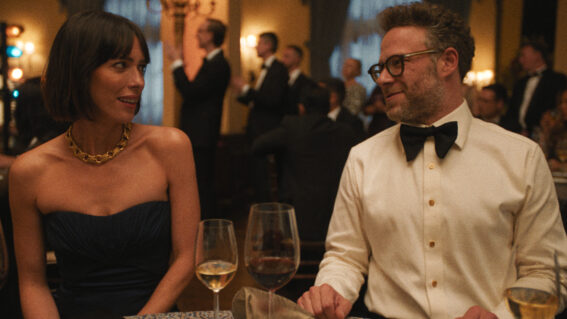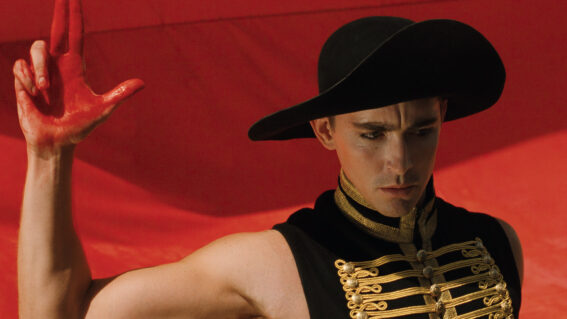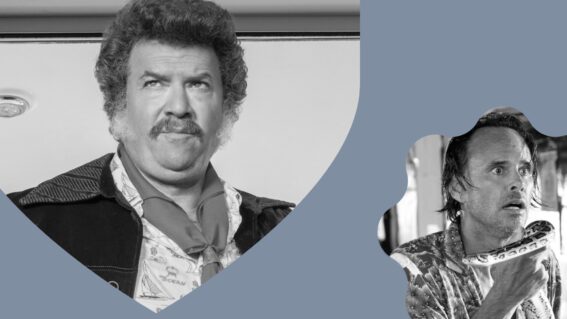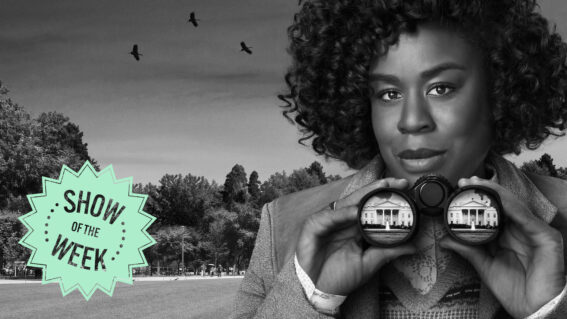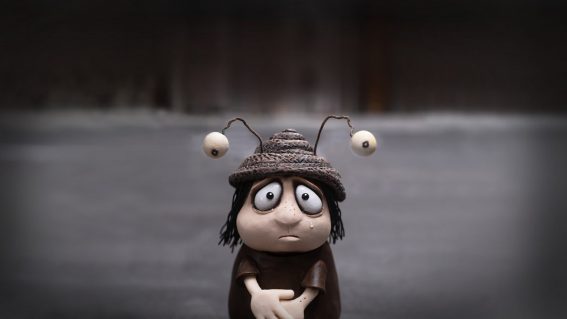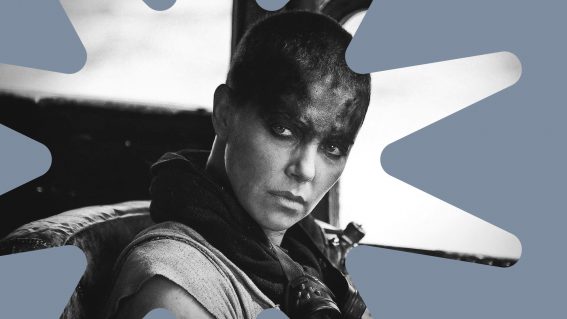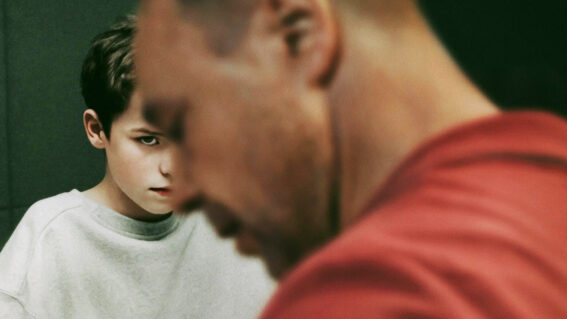Interview: Leanne Pooley and Chad Moffitt from ‘Beyond the Edge’
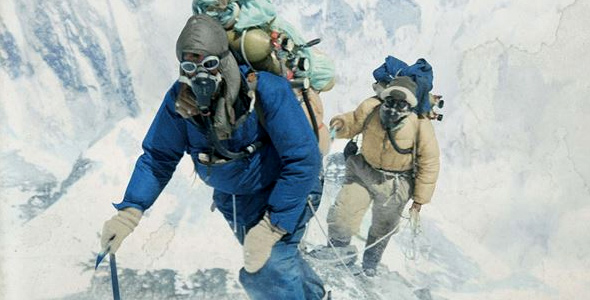
While the ending may be familiar, the tale of Sir Edmund Hillary’s conquest of Mt Everest has never been as awe-inspiring as its depiction in Beyond the Edge. Blending documentary and reenactments, as well as using 3D to convey the scale of Sir Ed’s challenge, this feature from director Leanne Pooley (Topp Twins: Untouchable Girls) led Dominic Corry to conclude in his Flicks review that “every New Zealander should see this film”. We sat down for a cuppa with Pooley, and Chad Moffitt who steps into the shoes of Hillary in Beyond the Edge.
FLICKS: Beyond the Edge is out this week. How long have you been working on it?
LEANNE POOLEY: By my standards it’s actually almost a fast turnaround. It’s a year and a half, which isn’t too bad… that’s pretty quick. Literally from go to whoa, it’s been a year and a half. I started working on the treatment in April 2012 I guess, so that’s a year and a half. That’s quite fast by my standards ‘cos normally I’m glacially slow.
Did you envisage it as a mix of documentary and reenactment right from the beginning?
LP: Yeah we did. We didn’t have the budget to shoot 80 minutes of drama, and I’m a documentary filmmaker, so it was always going to be that blending of genres.
That’s to the film’s benefit really, because you get to hear firsthand accounts with a visual retelling.
LP: That was partly the plan too, because you have that real footage. There’s something amazing about having that real material of the real people standing in the real place and if you can blend that as seamlessly as possible with your new stuff it gives everything more credibility.

(left to right) Sir Ed, Tenzing, Sonam Sherpa and Chad Moffitt
What role do you think the 3D plays in the film?
LP: Everyone knows how it ends, obviously, so it has to be about the journey. In order to get the most from the journey, I wanted the journey to feel experiential; I wanted the audience to feel like they were on the mountain with Ed and Tenzing and that they were experiencing what it’s like to be on Mt. Everest. And I did feel that with the 3D I’ve had the opportunity to make it feel like we’re as close as possible to standing on Everest. That way, at least they’re getting something more than just the ending.
CHAD MOFFITT: I’m actually looking forward to that aspect of it. This is the perfect application for 3D. It’s like Leanne’s saying, with all the scenery and stuff, it really gets you in the film.
LP: And also, the environment is a character in the film. The mountain is a character and so the 3D isn’t about hurling things at the audience and stuff flying out of the screen. It was more about trying to bring the audience into the world and making them understand that… You know, the Khumbu Icefall [an icefall at the head of the Khumbu Glacier on the Nepali slopes of Mount Everest] is a pretty cool place and so you want to bring the audience into the environment, not throw it at them.
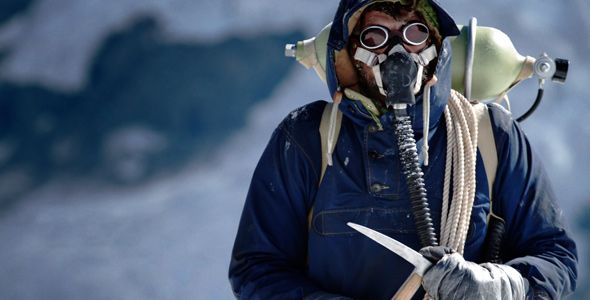
I guess Everest hasn’t really been seen on the big screen since newsreels, but that screen helps convey the sense of scale.
LP: The shine has kind of gone off Everest a little bit now. You know, you read in the paper that somebody with one leg and no ears climbed Mt. Everest so there’s this sense that it’s not difficult. First of all, it’s still difficult but it was extraordinarily difficult 60 years ago and so you need to show the size and the scale of the place for people to understand that… Far out, it was hard! Today, you do sort of feel like there’s practically a motorway. There’s this sense that it’s not hard anymore and it was about trying to show people how hard it was.
I think that’s the really important part that the reenactment plays in the film – just seeing it as a series of photos, particularly the conquest pics, or even just tracing a route up the mountain as a black line does not do justice to the scale of the endeavour.
CM: When you see it on a map, it looks like no big deal – just do it in an afternoon. But I think this film really brings you into it and shows you how hard and long the journey was.
How rigorous was the shoot for you? You didn’t climb Everest but you had to do a lot of clambering.
CM: I found it very physical. The load was spread a bit because there were some guys that did the more difficult technical climbing bits. But it was all quite physical, right down the mountain, and very well recreated old costumes and things, so it felt very real.
LP: It’s intimidating at times, isn’t it?
CM: Yeah.
LP: I remember the first day, you did look up and think ‘so you want me to go where?’
CM: The first day was very scary.
LP: We did a tough ledge on the very first day.
CM: It was right after we’d done a day of training working with crampons and things, on quite a gentle slope. But then on the first day we were on a crazy thing that ended down in this big valley. I’m sure it’s going to look really cool.
Did you head off to parts of New Zealand to double as parts of the climb? Did you build any of the sets or were you just finding locations?
LP: We had a set, so we did do some stuff on a set with green screen. The bulk of the drama was shot on location in the New Zealand Southern Alps and then I also had a crew that went to Everest. And there’s the old footage but for the shoot there were the three elements. Some of it’s both. Some of it we shot up high in the Alps but I’ve replaced the background. There’s a bunch of things going on.
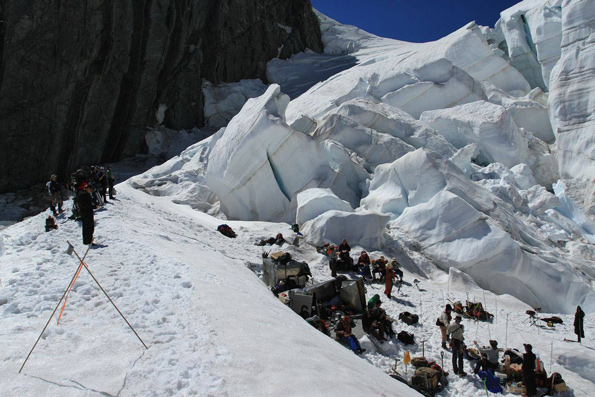
Behind the scenes at Mt. Cook
Had you spent much time in that alpine environment before?
CM: No not really. I’ve done a little bit of rock climbing and I’ve done skiing. I’ve been in the snow but I haven’t done a lot of alpine climbing so it was really amazing. When we were up in the mountains, we would helicopter up with a huge crew, so it was pretty amazing being up there in this wild environment and just getting little bits of the story here and bits of the story there
LP: The chap who gave Chad his lessons though, he did say you were very natural in terms of picking it up.
CM: Really?
LP: It’s not like Hollywood. In Hollywood they would have had six months – they would have climbed Everest! We didn’t have the budget for that so it was a short training period, but Guy said you took to it like a duck to water.
CM: That’s nice to hear.
LP: He’s super fit, which helps.
As far as you getting involved in the film, was it a case of you putting your hand up or did you scout him out?
LP: We did put a call out nationwide.
CM: I sent a picture in of the five dollar note. That got me my audition I guess. And then auditioned from there and did a camera test after that.
You sent five bucks in?
LP: He was trying to buy his way in! We’re cheap in New Zealand!
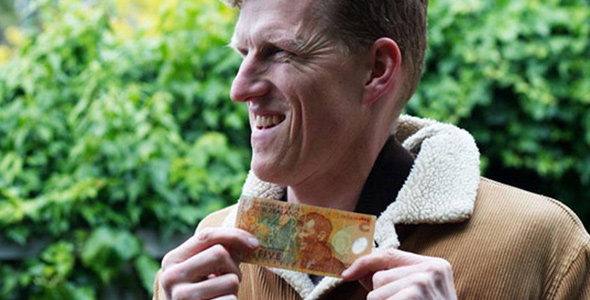
LP: It was amazing because we did this call and we got people from every walk of life. So many people love Ed and I think some of them knew they were never going to get the part but they just wanted to say they were somehow part of the film, you know? So it was amazing. One guy auditioned for Ed who would have literally been about 5’4”. I’m pretty sure he knew he wasn’t going to be Ed but… all walks of life. Really experienced actors, less experienced people. Chad was the very, very, very first person I auditioned. Did you know that?
CM: No!
LP: You were the first! And then I couldn’t get him out of my head.
CM: Awww.
How did you get on with the film’s dialogue-free performance? Had you had much acting experience before?
CM: I’ve done acting classes and singing groups for quite a long time. In terms of acting on screen, it’s mostly been short films and extra work and things like that. So it was definitely a new thing being so much the centre of attention. And kind of a blessing that there was no dialogue for me ‘cos that would have added a lot of pressure. When I first auditioned I wasn’t sure whether it was gonna be a full drama or what, so when I started getting books and things to do research, I was trying to listen to his voice and watch the way he walked and things. In case it was a full drama.
You’ve taken the film overseas, and obviously an international audience is going to relate differently to this story than in New Zealand. What was it like in Toronto?
LP: Because we got the runner-up for the Audience Award at Toronto, it does say that that audience did go on the journey with us. I do think it’s a different kind of audience. I think in New Zealand – I hope in New Zealand – there’ll be a sense of nostalgia, in a way. Like, this is our guy and he did it. And one of the reasons is because of where he came from. He was who he was because he was a Kiwi. So obviously the international audience, that’s not part of their connection. With them it’s really just about the journey and experiencing the world. But you know, it was really lovely to have been acknowledged at Toronto by the audience because it does say that they went on that journey even without that other layer that I’m hoping the New Zealand audience will embrace.
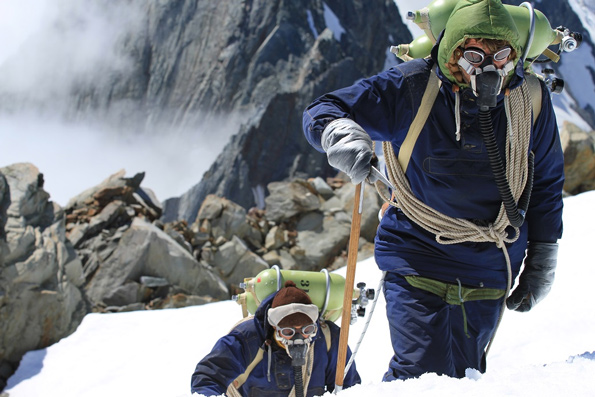
Do you have to keep those audiences in mind as you made the film?
LP: We really made it for the New Zealand audience first. In fact, the producer consciously didn’t look for a lot of international money because if you do that you do end up having to carve up your agenda. The agenda changes and we really wanted it to be our story, which is why it’s told from Ed’s perspective from the very first words you hear in the film. It’s Ed’s telling of the story. And while we try to honour everybody who’s in the film, it’s Ed’s story, ‘cos that’s our story. Really, we were pretty unashamedly New Zealand.
You mentioned before that you had a crew go and shoot at Everest. Did you go on that shoot?
LP: No I didn’t go. I would have been a liability. What everyone forgets, because it looks like every man and his dog’s done it, is that one in 45 die. Still. And that’s quite sobering. I’m not a mountain climber and if I’m going to start I might not start on Mt. Everest. They would have had to practically carry me up the mountain! It was never part of the way it was gonna be done. What happened was we shot everything else first and then when the crew went to Everest, Mark Whetu, who’s this extraordinary climbing-mountain-goat guy with a camera, he had a book of story boards… 40 pages of storyboards. “I need a shot where you look over the edge”; “I need a shot where you look at the Hillary Step”. So he had very specific shots to get. And to be honest I didn’t want to go. I knew I’d be a liability.

What was the toughest day of the shoot for you?
CM: Probably the first day. There was a lot of tough days actually. The first day springs to mind because it was really scary. First day on camera, in front of crew and that really scary bit. We were using these old crampons that were real crampons from back in the day and they’re really hard to climb on, especially on something steep. You need to stick the bottoms of your feet into the face, so that means your body’s upright and your ankles are twisted. It was scary and it was uncomfortable.
You’ve got a pile of hot gear on too…
CM: Yep. I think we had masks on that day and an oxygen thing in the back. Just getting used to climbing with another guy roped onto you. So yeah, it was scary and physically hard.
LP: It was a nightmare on the down below set too because these guys were in parkas on the set, when we weren’t on the mountain. It was like, 27 degrees. Really warm…
CM. Soooo hot. Really hot. It was like wearing two sleeping bags over your entire body. So hot.
Do you reckon you lost weight over the course of the shoot?
CM: I dunno. Maybe.
LP: Which would be accurate because it’s apparently a fantastic diet. You lose your appetite at altitude, and they all lose weight. If you look at the film, Hillary does look thinner at the end when they’re coming down than he does at the beginning. So hopefully you did lose weight [laughs].
Beyond the Edge is in cinemas from October 24th.
Click here for more info and session times



